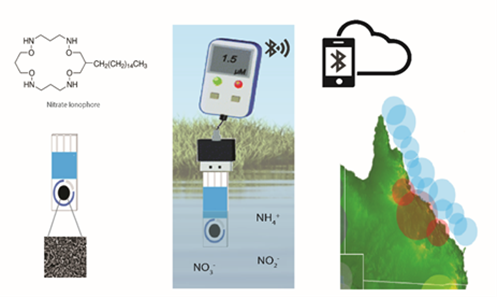Developing electrochemical sensors for real-time analysis of inorganic nitrogen in water
First published in Water e-Journal Vol 7 No 1 2022.
DOWNLOAD THE PAPER
Abstract
In Australia, all wastewater treatment plant sites that release to receiving waters, implement programs to monitor and assess the effects of potential contaminant discharge on receiving environments. The Mackay Regional Council (MRC) owns and operates several Wastewater Recycling Facilities and is committed not only to meet its general environmental duty, but also improve the environmental performance, conserving the region’s coastal ecosystems for future generations. New discoveries and developments in technology as time progresses, continually introduce improvements to these monitoring processes. This project investigates the fabrication of electrochemical sensors for more cost-effective, real-time, and accurate analysis of nitrogen contaminants in release waters.
Recent advancements in nanomaterials, such as ion selective electrodes containing nitrate ionophore, and nanocomposite electrodes consisting of nickel-gold-reduced graphene oxide, have shown excellent electroanalytical performances under laboratory conditions. Miniaturisation of transducer components also provide flow-on benefits such as portability, rapid real-time measurements, lowered operating costs and reduced chemical footprint, with the ability for data acquisition and relay, demonstrating potential for easier accessibility in remote areas. The challenge remains in extending these advantages to the field setting.
Partnering up with the Mackay/Whitsunday Regional Councils and the Queensland State Government via the Queensland Water Regional Alliance Program (QWRAP), Central Queensland University is investigating the implementation of electrochemical devices on monitoring sites in the Mackay/Whitsunday regions. Statistical analysis of results will allow direct comparison of data with the ongoing laboratory based spectrophotometric analysis. Currently, the validation phase of the fabricated electrochemical sensors is still in effect, not yet trialled in the field setting. The research may be of benefit to industry, government agencies and other stakeholders as possibilities for reducing monitoring costs and mitigating environmental and management ramifications.
Figure 1: Concept art of a nitrate selective electrode and portable potentiostat device with data relay capabilities.

